Red Sea Scuba in Sharm el-Sheikh
True classics never go out of style. A diving hotspot for nearly 50 years, Egypt’s northern Red Sea showcases lovely reefs, remarkable wrecks, fish parades, dazzling visibility and real value. Sharm el-Sheikh, on the Sinai Peninsula, is an ideal base of operations for a laid-back, land-based scuba sojourn.
Monumental Corals
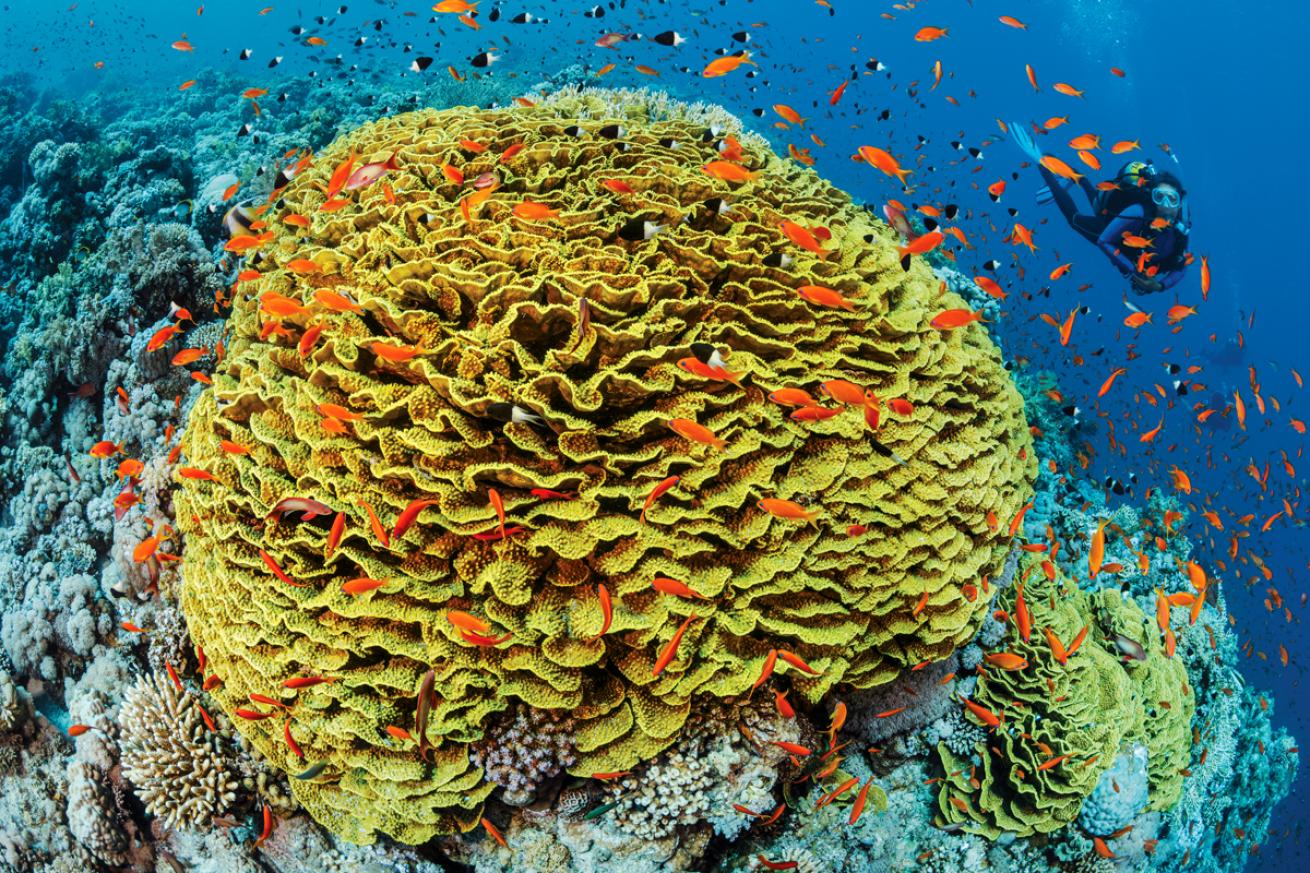
Brandon ColeA cloud of scalefin anthias (aptly nicknamed “sea goldies”) orbits a huge, pristine mound of cabbage coral on Jackson Reef in the Straits of Tiran.
Healthy, vibrant corals are an unmistakable, unforgettable signature of the Red Sea. More than 200 coral species thrive in these waters, forming the structural foundation for the storied reefs themselves and providing critical habitat for fishes and invertebrates. The resplendent array of hard and soft corals decorates shallow gardens, terraced slopes, sheer walls, pinnacles and seamounts. There are dozens of dive sites along the southern Sinai coast, from Ras Mohamed in the southwest to the Straits of Tiran in the northeast, all accessible from resorts in Sharm’s Na’ama Bay.
Desert Sea Oasis
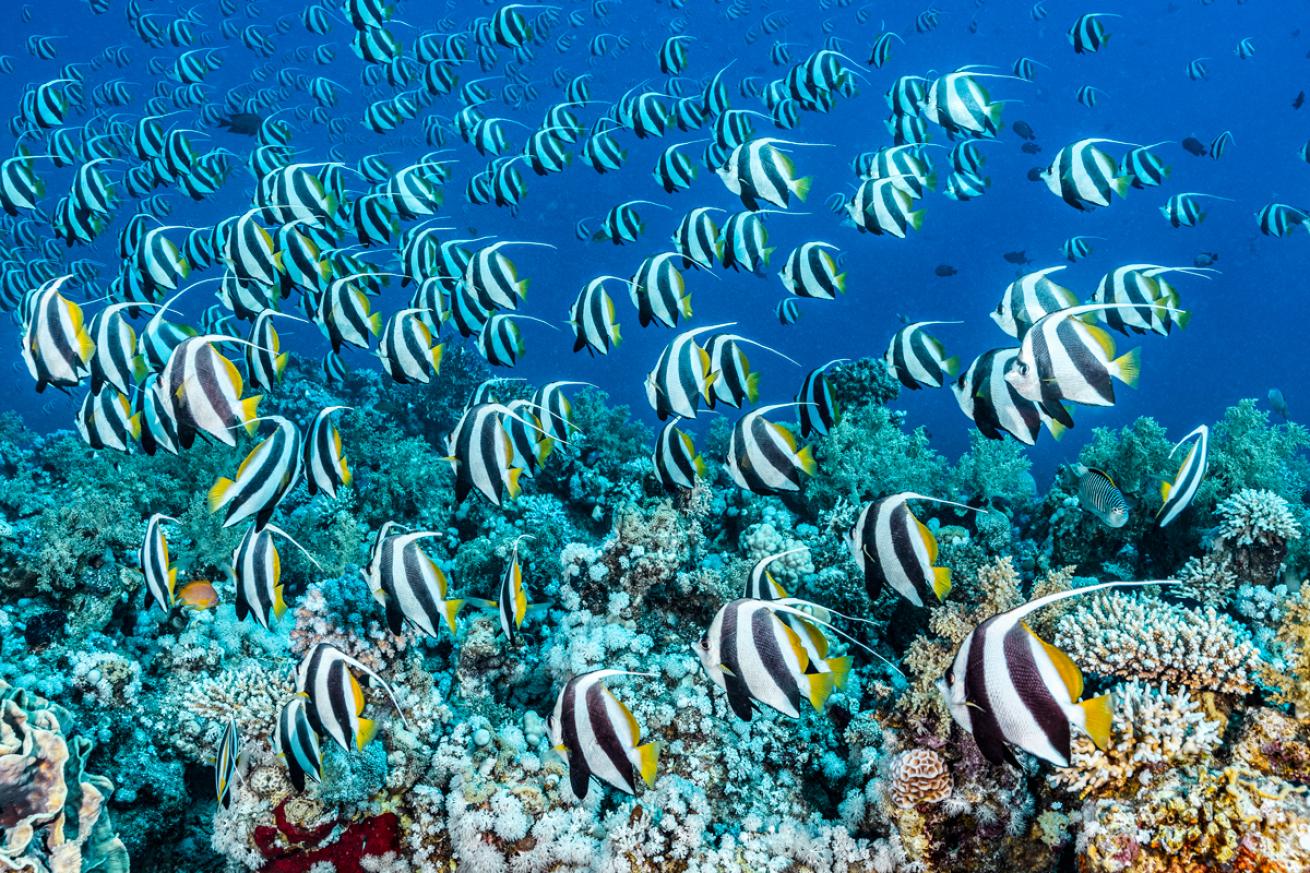
Brandon ColeHundreds of bannerfish swim together at Ras Katy.
From space, Egypt’s Sinai Peninsula looks like a red-orange arrowhead, a sunburned extension of harsh, mountainous land pointing to the sapphire-blue Red Sea. It couldn’t be more obvious. It positively screams: “Dive here!” I kick myself when I think of how long it took me to visit this desert oasis, perennially popular as a scuba training ground and quick-fix backyard holiday escape for Europeans, much like the Caribbean is for North Americans. Hardcore diving pioneers of decades past used small boats, jeeps and even camels to transport gear (tanks, compressor, tents, etc.) and themselves in their quest to explore this untouched frontier. Today, a fleet of liveaboards and day-trip boats ferries divers about in comfort.
A Wonder Indeed
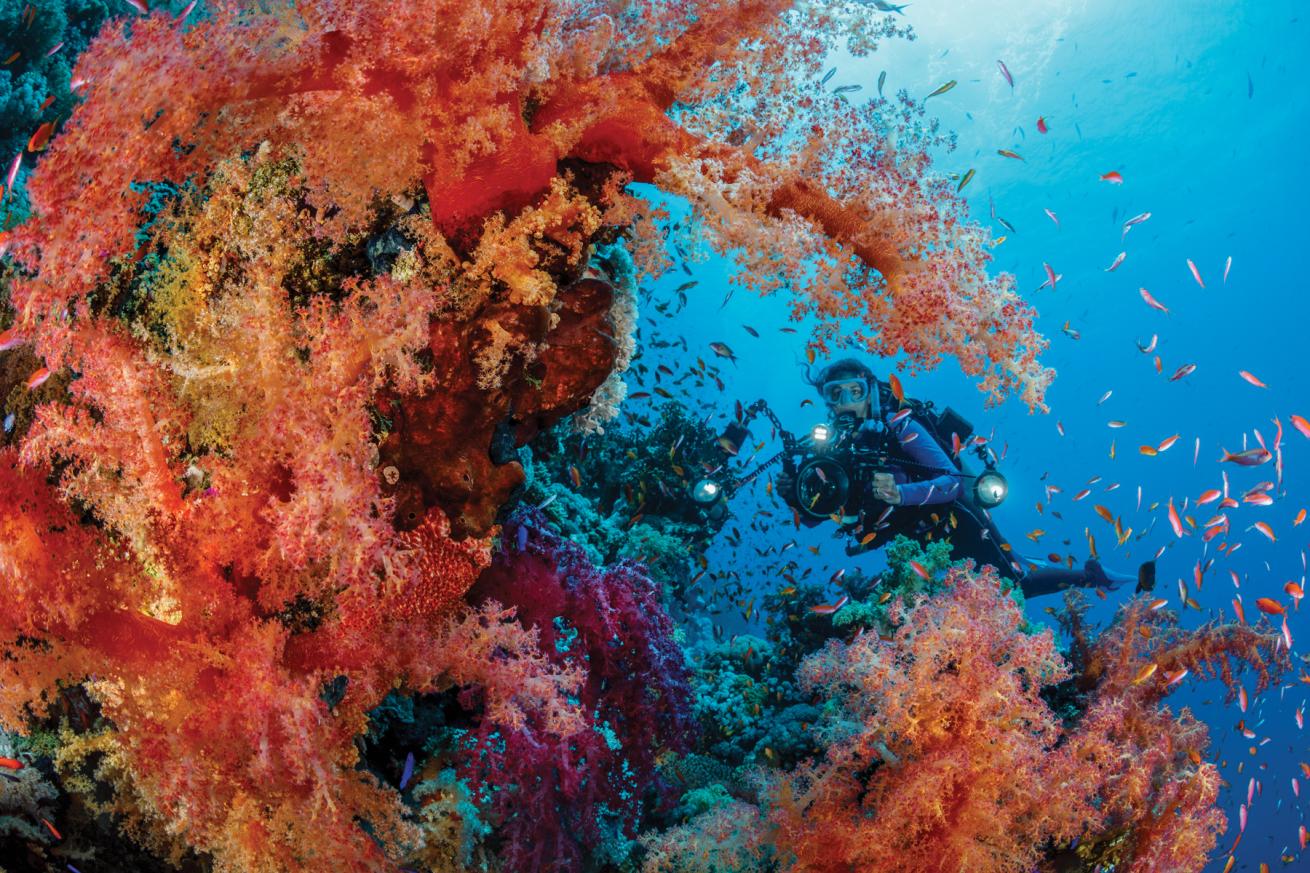
Brandon ColeAn unruly forest of fiery soft corals covers the inside flank of Thomas Reef in the Straits of Tiran. Lionfish, lyretail grouper, coral trout, Napoleon wrasse, zebra angels, longnose hawkfish and goldspotted trevally can also be found at this colorful reef.
Labeled one of the Seven Wonders of the Underwater World, the northern Red Sea caters to all experience levels and interests. Twenty percent of the 1,000-plus species of fish here are endemic, and the spectacular coral gardens seem bioengineered specially for stunning wide-angle photography. For those whose boats are floated by sunken ships, the SS Dunraven, which sank in 1876, and the legendary SS Thistlegorm await. The Thistlegorm rests in 100 feet of water and is a must-do, full-day trip from Sharm. Nothing can prepare you for the thrill of seeing motorbikes, trucks and other implements of war inside the 413-foot-long British vessel’s cargo holds. Numerous other shipwrecks in the northern Red Sea lie just out of range of Sharm’s day-boat fleet but are regularly visited on liveaboard safaris.
Underwater Playground
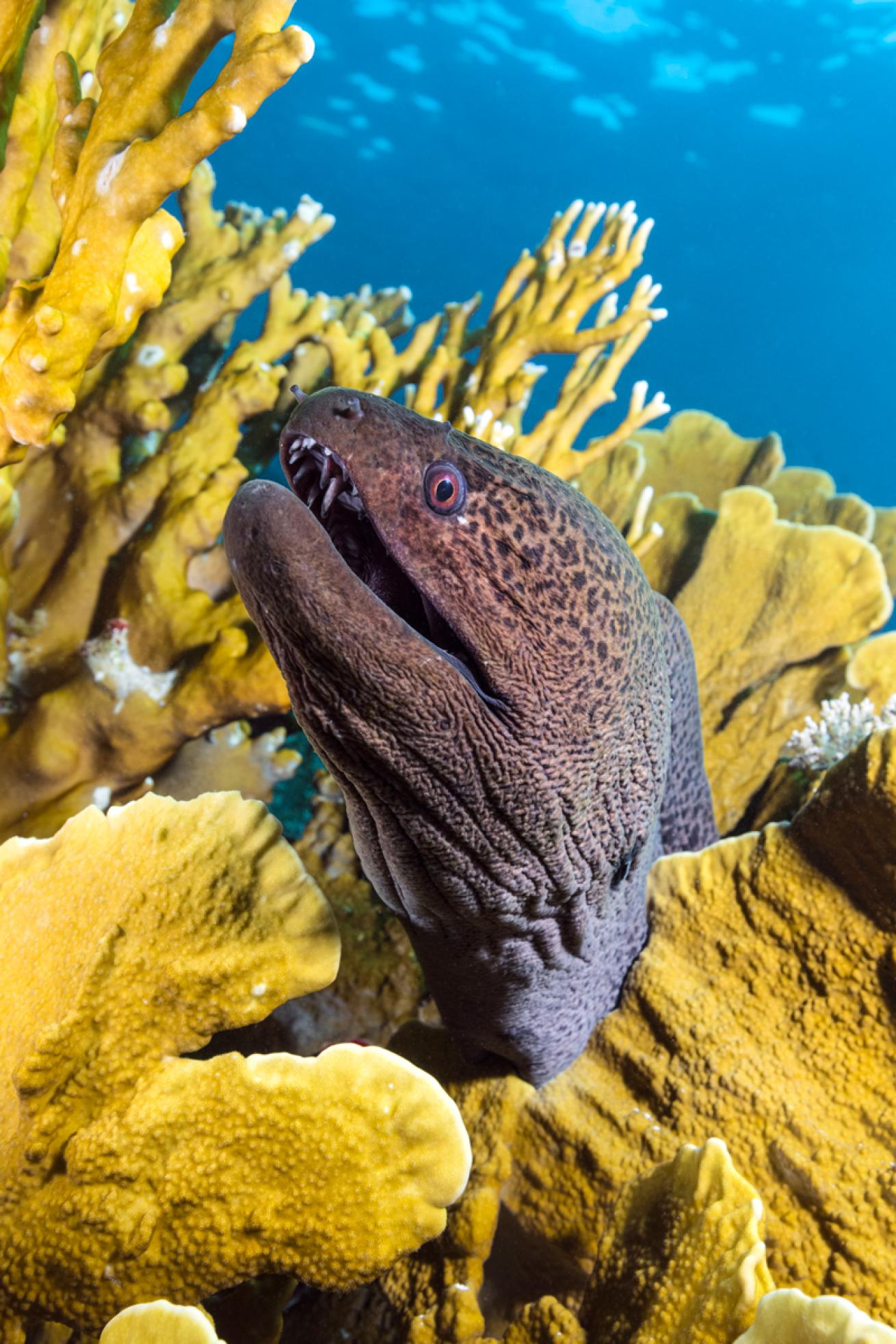
Brandon ColeA moray eel peeks out from a thicket of fire coral on Yolanda Reef in Ras Mohamed.
A marine reserve since 1983, Ras Mohamed National Park at the Sinai Peninsula’s southern tip is the crown jewel of northern Red Sea reefs. Two coral pillars—Shark Reef and Yolanda Reef—perch on a precipice at a drop-off that plunges over 2,500 feet. Marine life is diverse, topography dramatic and colors intense. Drifting along sheer walls on the outside, and weaving among the maze of bommies and sand channels between the main reefs, one encounters turtles, moray eels, barracuda, stingrays, crocodilefish, sailfin tangs, dogtooth tuna and bigeye jacks, plus the usual mind-blowing coralscapes. “Ras Mo” is off the charts in June and July, when massive spawning aggregations of red snapper, unicornfish and spadefish converge in their shoaling, shimmering multitudes.
Need To Know
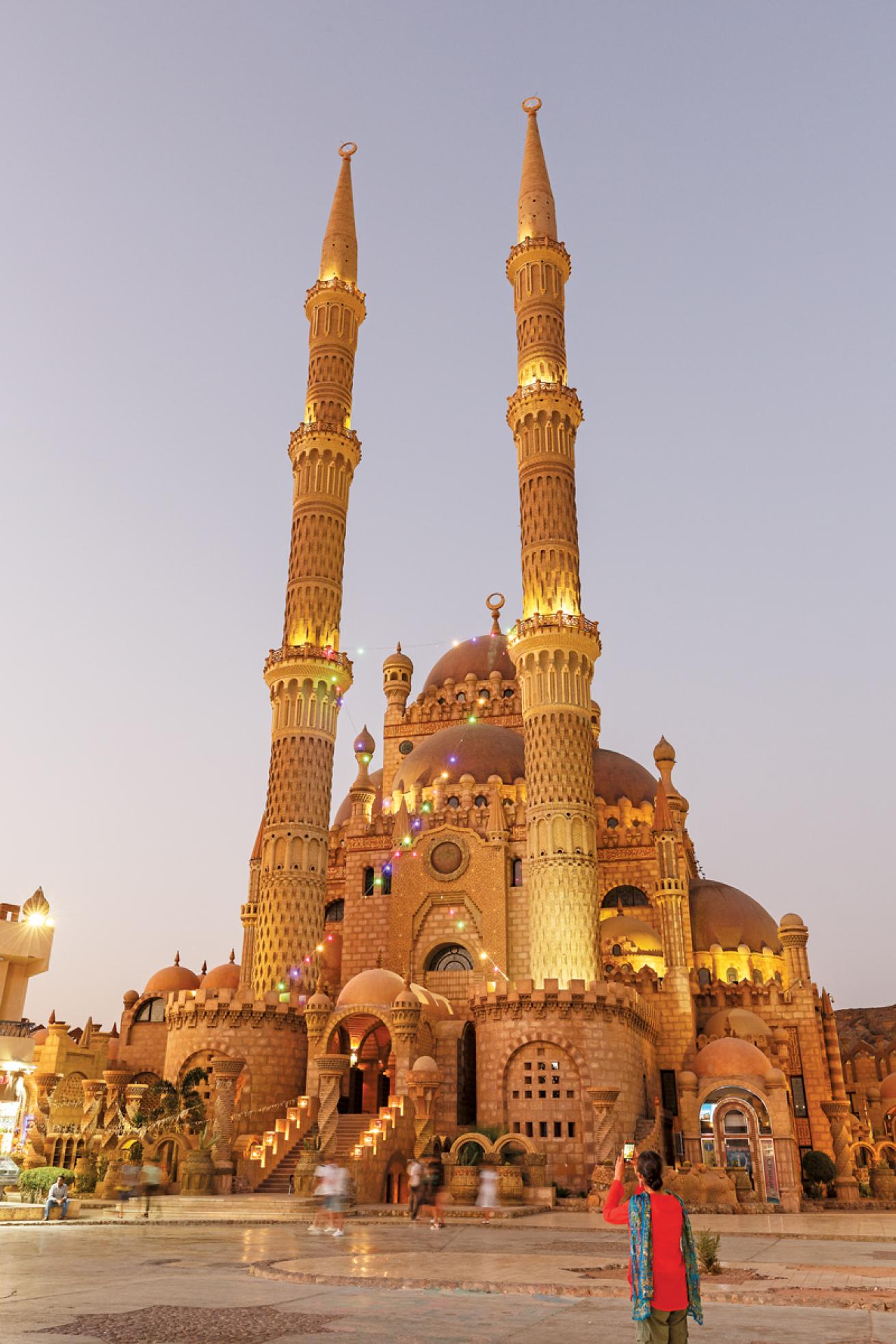
Brandon ColeAl Sahaba Mosque lights up the dusk sky in the Old Town section of Sharm el-Sheikh.
When To Go: Egypt’s Red Sea is a year-round destination. Ocean temperatures cool significantly in winter and the summers are very hot above the waves, so many people choose shoulder seasons.
Dive Conditions: Water temperatures range from 70 degrees Fahrenheit in February to 85 in August. Visibility varies from 50 to 125 feet. Air temps range from 60 to 105 degrees. Rain is rare; wind is common. Current is present at some sites. Diving depths run the gamut, from just under the surface down into the technical-diving realm. Dive conservatively and carry a surface marker buoy. There are hyperbaric chambers in Sharm el-Sheikh and Dahab.
Operators: Choices are nearly limitless in the Red Sea. The author dived with Emperor Divers, a long-established, well-run company operating many liveaboards as well as day-trip dive boats and training centers throughout Egypt. Its operation in Sharm el-Sheikh’s Na’ama Bay makes diving the northern Red Sea easy and affordable. Na’ama Bay is a bustling town with a fun, international dive tribe vibe, a wide variety of restaurants, scuba-friendly accommodations and even nightlife.
Travel Tips: Sharm el-Sheikh (airport code SSH) can be reached by plane via direct flight from some European hubs or by connecting via Cairo (CAI). One can also reach Sharm by private car or mini-bus transfer, a six- to seven-hour drive from Cairo. If you have loads of luggage and are traveling with a few people, overland travel may be a nice, affordable option to see a bit more of the Sinai Peninsula while avoiding airport hassles and excess baggage fees.
Religious history buffs with extra time may choose to visit St. Catherine’s Monastery in its remote refuge on Mount Moses to see the descendant of the biblical burning bush, Byzantine art, and a library filled with beautiful, ancient illuminated bibles and manuscripts. Hiking aficionados can join a Bedouin guide for tours to trek even higher into the mountain reaches and witness a spiritually moving sunrise or sunset. Just remember these excursions are at high altitude, so don’t fly immediately afterward.










